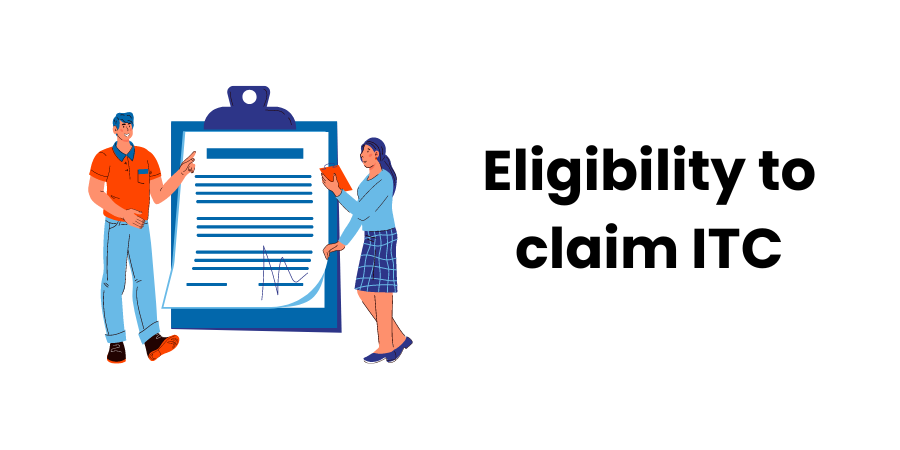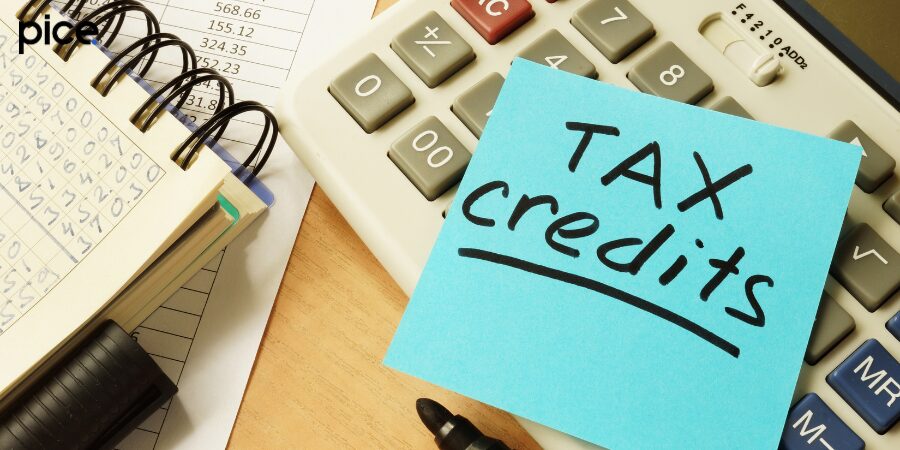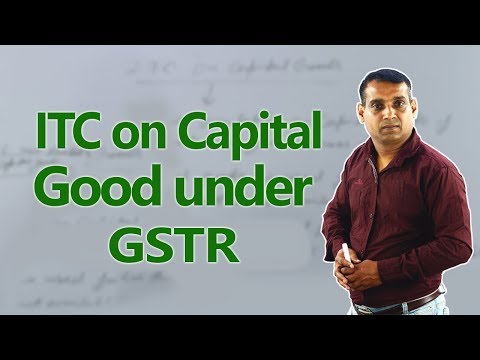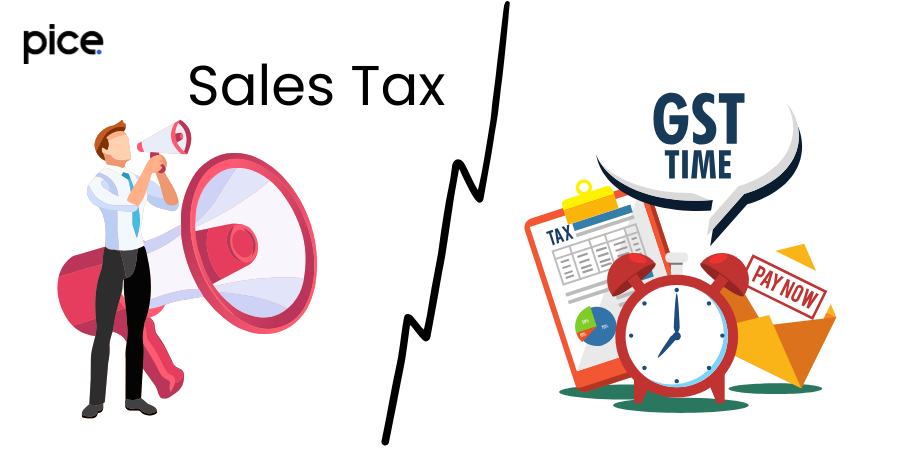Key Takeaways
- A registered person under GST can claim Input Tax Credit (ITC) if they have valid documentation, including tax invoices, and comply with all GST regulations.
- Businesses opting for voluntary registration can claim ITC from the date of registration, provided they maintain proper documentation and file regular returns.
- Taxpayers migrating from the composition scheme to the regular tax scheme can claim ITC on the credit of inputs held, semi-finished goods, and finished goods at the time of transition.
- When an exempt supply becomes taxable, ITC can be claimed on the inputs and capital goods used for such supplies, ensuring the details are reflected in the electronic credit ledger.
- Chartered Accountants play a crucial role in ensuring GST compliance, helping businesses maximize their credit of input tax and manage the balance of input tax efficiently.
What is Input Tax Credit?
Input Tax Credit (ITC) is a fundamental concept under the Goods and Services Tax (GST) regime, enabling registered taxpayers to claim a credit for the GST paid on the purchase of goods and services. This mechanism ensures that the tax is collected on the value addition at each stage of the supply chain, preventing the cascading effect of taxes. The amount of ITC claimed is deducted from the total tax liability, effectively lowering the amount of tax payable to the government.
To claim ITC, a registered person must meet specific conditions. These include having a valid tax invoice or debit note, having received the goods or services, and the supplier having deposited the tax to the government. Additionally, the taxpayer must furnish their GST returns regularly and maintain proper documentation, including the electronic credit ledger and electronic cash ledger, to ensure the availability of credit.
The primary advantage of ITC is its role in enhancing the liquidity and cash flow of businesses. It helps maintain the balance of input tax by allowing businesses to offset the taxes paid on inputs against the taxes due on outputs. This system is particularly beneficial for businesses involved in manufacturing, trading, and services, as it reduces their overall tax burden and improves profitability.
Who can claim ITC?

Not every taxpayer is eligible to claim ITC. Only registered persons under GST can avail of this benefit. To be eligible, a taxpayer must have a valid GST registration, which is the grant of registration by the tax authorities. Once registered, the taxpayer is classified as a taxable person, who is then obligated to comply with GST regulations, including the filing of returns and maintaining proper records.
The process of claiming ITC involves ensuring that the inputs, capital goods, and input services used are in the course of or for the furtherance of business. Additionally, the tax invoices or debit notes issued by the suppliers must be in compliance with the GST rules. These documents are crucial as they serve as proof of the tax paid and are required for claiming ITC.
Moreover, the registered person must ensure that the supplier has filed their GST returns and paid the tax to the government. This requirement underscores the importance of choosing reliable suppliers and maintaining proper communication with them to ensure compliance. Non-compliance by the supplier can lead to the denial of ITC, impacting the taxpayer’s cash flow and tax liability.
💡If you want to pay your GST with Credit Card, then download Pice Business Payment App. Pice is the one stop app for all paying all your business expenses.
What can be claimed as ITC?
Under the GST regime, ITC can be claimed on various types of inputs and services, provided they are used for business purposes. These include the GST paid on raw materials, semi-finished or finished goods, capital goods, and services like rent, utilities, and professional fees. However, certain conditions and restrictions apply to the types of inputs and services eligible for ITC.
For instance, ITC cannot be claimed on goods and services used for personal purposes, exempt supplies, or supplies that fall under the composition scheme. Additionally, there are specific restrictions on ITC for motor vehicles, travel benefits extended to employees, and goods or services used for construction of immovable property.
The process of claiming ITC involves matching the details of the invoices with the supplier’s records and ensuring they are reflected in the electronic credit ledger. This ledger is maintained on the GST portal and is an essential tool for tracking the availability of credit. Any discrepancies must be addressed promptly to ensure the smooth flow of input credit and avoid penalties.
Input Tax Credit under Voluntary Registration
Voluntary registration under GST allows businesses that do not meet the turnover threshold to register voluntarily and avail of the benefits of ITC. This option is particularly beneficial for businesses that expect to grow or those that deal primarily with GST-registered clients, as it enables them to claim ITC on their purchases and reduce their overall tax liability.
When a taxpayer opts for voluntary registration, they become a taxable person and must comply with all GST regulations, including the filing of returns and the issue of tax invoices. The ITC can be claimed from the date of registration, provided the taxpayer has valid tax invoices or debit notes for the purchases made.
The availability of credit under voluntary registration helps businesses manage their cash flow and reduce the cost of goods and services. It also enhances the credibility of the business in the eyes of suppliers and customers, as it indicates compliance with tax laws and regulations. However, it is essential to maintain accurate records and ensure timely filing of returns to avoid penalties and interest charges.
Input Tax Credit for Taxpayers Migrating from Composition to Normal Tax Scheme
Taxpayers registered under the composition scheme pay tax at a lower rate but are not eligible to claim ITC. However, when a taxpayer migrates from the composition scheme to the normal tax scheme, they can claim ITC on the inputs held in stock, semi-finished goods, and finished goods on the day immediately preceding the date from which they become liable to pay tax under the regular scheme.
To claim this credit, the taxpayer must have valid documents showing the tax paid on such inputs, and the inputs must be intended for making taxable supplies. The claim for ITC must be made within 30 days from the date of becoming liable to pay tax under the regular scheme, or within such extended period as may be allowed by the authorities.
This transition ensures that taxpayers do not lose out on the ITC benefits when they move from the composition scheme to the regular scheme. It also helps maintain the balance of input tax and supports the smooth flow of credit in the supply chain, thereby reducing the overall tax burden and improving cash flow.
Input Tax Credit When an Exempt Supply Becomes Taxable
When an exempt supply becomes taxable, taxpayers can claim ITC on the inputs and capital goods used for such supplies from the date they become taxable. This provision ensures that businesses do not lose out on ITC benefits due to changes in the tax status of their supplies.
To claim this ITC, the taxpayer must have valid tax invoices or debit notes for the inputs and capital goods, and the inputs must be used for making taxable supplies. The claim for ITC must be made within a specific period as prescribed by the authorities, and the details must be reflected in the electronic credit ledger.
This provision helps businesses manage their tax liabilities and cash flow effectively, especially in cases where there are frequent changes in the tax status of their supplies. It also supports the availability of credit and ensures the smooth flow of input credit in the supply chain.
Input Tax Credit on Capital Goods
Capital goods are long-term assets used in the production of goods or services. Under the GST regime, taxpayers can claim ITC on the GST paid on capital goods, provided they are used for business purposes and the taxpayer has a valid tax invoice or debit note.
The ITC on capital goods can be claimed in a single installment, unlike the previous tax regime where it was spread over multiple years. This provision helps improve the cash flow and reduce the overall tax burden for businesses, especially those with significant investments in capital goods.
To claim ITC on capital goods, the taxpayer must ensure that the goods are used for making taxable supplies and are not covered under any of the restrictions or exclusions specified in the GST rules. The details of the capital goods and the ITC claimed must be reflected in the electronic credit ledger and maintained for audit and verification purposes.
Input Tax Credit for Transferees in Business Amalgamation, Transfer, Lease, or Merger
In cases of business amalgamation, transfer, lease, or merger, the transferee can claim ITC on the inputs and capital goods held by the transferor at the time of such transfer. This provision ensures the continuity of ITC benefits and supports the seamless transition of business operations.
To claim ITC in such cases, the transferor must furnish details of the inputs and capital goods transferred, along with the tax invoices or debit notes, and the transferee must incorporate these details in their electronic credit ledger. The availability of credit in such cases is subject to the fulfillment of conditions specified under the GST rules, including the submission of the necessary documentation and compliance with the provisions for transfer of liabilities.
This provision helps maintain the balance of input tax and supports the availability of credit during business restructuring or reorganization. It ensures that the transferee can continue to avail of ITC benefits and manage their tax liabilities effectively, thereby improving cash flow and reducing the overall tax burden.
FAQs
What is the eligibility criteria for claiming Input Tax Credit under GST?
A registered person under GST can claim Input Tax Credit (ITC) if they have a valid tax invoice, the goods or services have been received, and the supplier has paid the tax to the government. It’s essential for the taxpayer to file their GST returns regularly, including annual returns, to ensure the availability of input tax credit.
Can a business claim ITC under voluntary registration?
Yes, businesses opting for voluntary registration can claim ITC on purchases from the date of registration. They must ensure that they have proper documentation and comply with all GST regulations, including the issue of invoices and filing of annual returns.
How can ITC be claimed when migrating from the composition scheme to the regular tax scheme?
When a taxpayer migrates from the composition scheme to the normal tax scheme, they can claim ITC on the credit of inputs held in stock, semi-finished goods, and finished goods on the day immediately preceding the date of transition. The claim must be made within 30 days of migration, subject to the fulfillment of conditions specified under GST rules, such as Rule ITC.
What happens to ITC when an exempt supply becomes taxable?
When an exempt supply becomes taxable, a registered person can claim ITC on the inputs and capital goods used for such supplies from the date they become taxable. The taxpayer must have valid tax invoices and ensure the details are reflected in their electronic credit ledger.
How is ITC on capital goods claimed?
ITC on capital goods can be claimed by a registered person in a single installment, provided the capital goods are used for business purposes and making taxable supplies. Proper documentation, including tax invoices, must be maintained, and the details should be reflected in the electronic credit ledger.
Can ITC be transferred during business amalgamation, transfer, lease, or merger?
Yes, in cases of business amalgamation, transfer, lease, or merger, the transferee can claim ITC on the inputs and capital goods held by the transferor. The transferor must furnish the necessary details and documentation, and the transferee must incorporate these details in their electronic credit ledger to ensure the availability of input tax credit.
What role does a Chartered Accountant play in claiming ITC?
A Chartered Accountant helps ensure compliance with GST rules and regulations, including the proper issue of invoices, maintenance of records, and filing of returns. They assist in verifying the eligibility and documentation for claiming ITC, ensuring that businesses maximize their credit of input tax while adhering to statutory requirements. Additionally, they help manage the balance of input tax and address any issues related to the flow of input credit.








